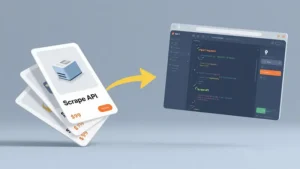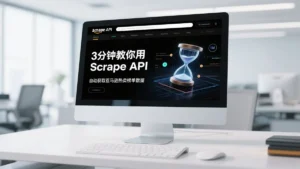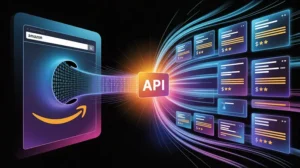Keywords: web crawler, data scraper, Pangolin Scrape API, data extraction, headless browser
Definition and Purpose of Web Crawlers (or Data Scrapers)
- Main Methods and Techniques of Web Crawlers
- Using APIs provided by specialized websites
- Using asynchronous requests
- Employing user agent rotation
- Operating during off-peak hours
- Adhering to copyright laws and website rules
- Utilizing headless browsers
- How to Use the Pangolin Scrape API Product for Web Crawling
- Register for a free account
- Log in and choose a service
- Initiate data scraping
The commercial value and applications of web crawlers (or data scrapers) lie in their ability to replicate data from the internet or other documents. Typically requiring the handling of large datasets, they often necessitate a crawler agent. Data scraping services are integral to any search engine optimization strategy, enabling the discovery of data not readily visible in the public domain, thereby benefiting clients or businesses. Data crawlers involve dealing with extensive datasets, and you can develop your own crawlers (or bots) capable of scraping the deepest layers of web pages. Data extraction refers to retrieving data from any source, not necessarily limited to web pages.
While there are numerous methods and techniques for web crawlers, we’ll focus on some commonly used ones here. The first method involves using APIs provided by websites. This is the simplest and most effective approach, as APIs are interfaces designed by websites for easy data exchange. They usually come with clear documentation and examples and are not subject to anti-crawling restrictions. However, not all websites provide APIs or may offer APIs that don’t meet our needs, leading us to explore other methods.
The second method is using asynchronous requests, an efficiency-improving technique allowing multiple requests to be sent simultaneously without waiting for each response. This can save time and resources, but care must be taken not to over-request, as it may trigger anti-crawling mechanisms.
The third method is user agent rotation, a method to disguise the crawler by making it appear as if different browsers or devices are accessing the website. User agents are strings identifying the browser or device type, and random selection from a list of user agents found online is done with each request.
The fourth method is operating during off-peak hours, a way to avoid disrupting normal website operations. Crawling during low-traffic periods reduces the burden on the website and minimizes the risk of detection. Analyzing website access statistics or using tools helps identify low-traffic periods for optimal crawling times.
The fifth method is adhering to copyright laws and website rules. This ethical and legal approach ensures the crawler doesn’t infringe on website or data ownership and doesn’t violate terms of use or privacy policies. Checking a website’s copyright statement or robots.txt file provides insights into the site’s rules, and respecting these rules during data scraping is essential.
The sixth method involves using headless browsers, simulating browser behavior to handle complex web pages, such as those with dynamically loaded content, login requirements, or JavaScript execution. Headless browsers operate without a graphical interface, running in the background to mimic user actions and return the page’s source code or screenshots. Common headless browsers include Selenium, Puppeteer, and PhantomJS. While using headless browsers allows crawling any webpage, drawbacks include resource and time consumption, as well as potential detection by websites.
How do you use the Pangolin Scrape API product for web crawling?
This convenient and powerful data scraping service eliminates the need for coding, enabling easy data extraction from any website. The steps to use Pangolin Scrape API product are as follows:
- Register for a free account: Visit the official website of Pangolin Scrape API, enter your email and password to create a free account, allowing 1000 free crawls per month.
- Log in and choose a service: After logging in, you can access various services provided by Pangolin Scrape API, such as web crawlers, image crawlers, video crawlers, PDF crawlers, social media crawlers, etc. Select a service based on your needs.
- Start data scraping: Once the service is chosen, input the website you want to scrape, and set parameters like depth, frequency, and format. Click start to initiate the crawl, and Pangolin Scrape API will fetch the data. Monitor the progress and results during the crawl, and pause or stop it as needed. After completion, download or export your data or retrieve it via the API.
Advantages of using Pangolin Scrape API include time and effort savings, no need for complex code, and freedom from concerns about anti-crawling issues. It allows scraping any data type with high quality and quantity. However, the downside is the need for payment if your crawling needs exceed the free quota. You may need to purchase additional crawls or packages, and you may not have complete control over the crawling process and results, occasionally encountering errors or exceptions.
Web crawlers have numerous commercial values and applications, helping gather useful data to enhance decision-making, optimize business processes, and create more value. Some typical applications of web crawlers include:
- Market research and competitive analysis: Crawlers can extract data from various websites, such as e-commerce, social media, and news sites, providing information on products, prices, reviews, trends, and sentiments for analysis and comparison.
- Content aggregation and recommendation: Crawlers can gather data from blogs, video platforms, music sites, etc., extracting information on topics, tags, categories, ratings, and views. This data can be integrated and filtered to provide personalized content, increasing user satisfaction and loyalty.
- Data mining and machine learning: Crawlers can retrieve data from education, healthcare, finance websites, etc., extracting knowledge, patterns, and predictions. This data supports the development of artificial intelligence, improving AI performance and accuracy.







